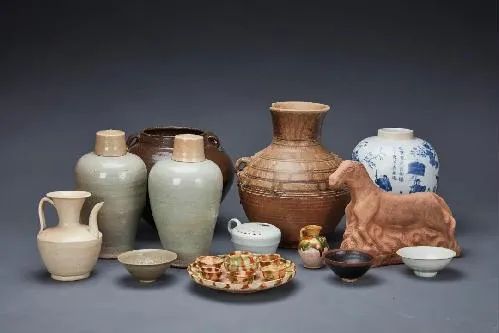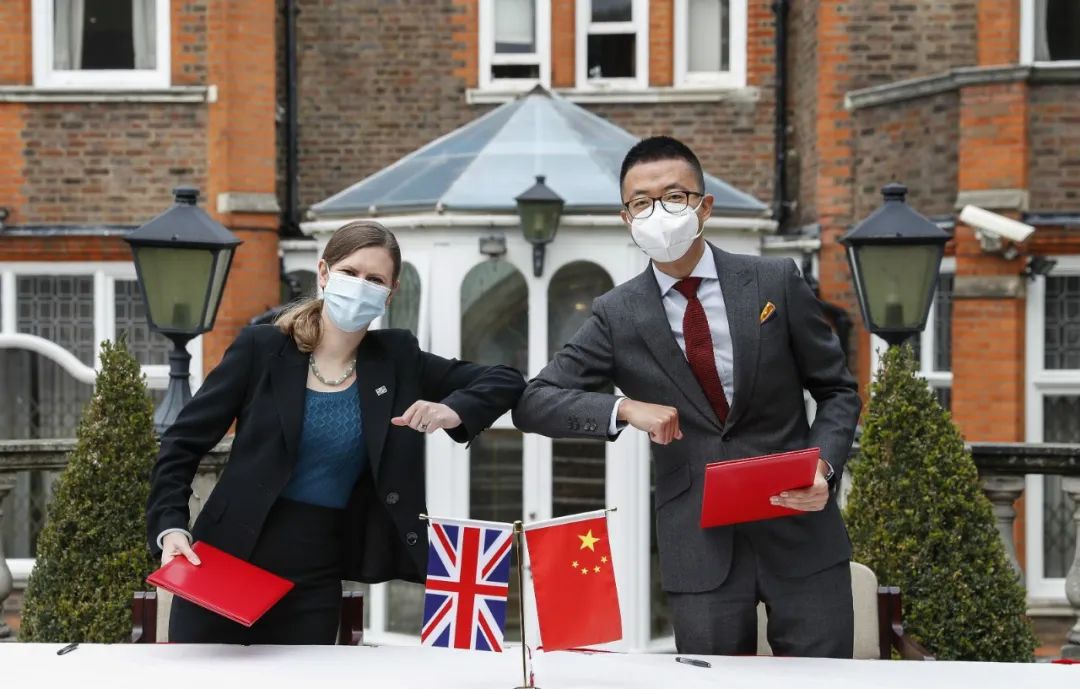After a long time of work, the epidemic has been unstoppable, and the Chinese government’s 25-year-long transnational cultural relics recovery operation has recently come to an end.

On the evening of October 19, 2020, the returned cultural relics left London on flight CA938. Image courtesy of the Chinese Embassy in the UK
Xinhua News Agency reporters learned from the press conference held by the State Administration of Cultural Heritage on November 18 that since January this year, the State Administration of Cultural Heritage has worked closely with foreign affairs, customs and other departments to overcome the adverse effects of the epidemic with the strong support of our embassy in the UK. Recently, 68 smuggled cultural relics lost in the UK for 25 years have been successfully recovered.
The three-color seven-star plate of the Tang Dynasty, the blue and white porcelain of the Song Dynasty, the stone carving horse of the Yuan and Ming Dynasty, the plum vase of the Ming Dynasty…including porcelain, pottery, stoneware, bronze, etc., the time span from the Spring and Autumn Period to the Qing Dynasty. Appraised by the State Administration of Cultural Heritage, the entire batch of cultural relics is rich in types, good in appearance, and more exquisite. Some cultural relics have important historical, artistic and scientific value.

Partial return of cultural relics. The picture comes from the website of the State Administration of Cultural Heritage of China.
Public Counselor Yu Peng of the Cultural Office of the Chinese Embassy in the UK is a witness and witness of this 25-year transnational recourse.
On February 1995, Yu Peng, then the second secretary of the Cultural Office of the Chinese Embassy in the UK, received a call from the British police. The police said that in the process of investigating an international cultural relics crime case, a large number of suspected Chinese cultural relics were found, and they hope to meet with our embassy staff to discuss follow-up actions.
In March of the same year, the British police carried out the “Operation Water Candle” and intercepted a total of 7 trucks smuggling cultural relics that arrived in the UK by an international smuggling group. The State Administration of Cultural Heritage of China sent personnel to the UK for identification and confirmed that it was smuggled Chinese cultural relics.
After more than three years, China went through complicated and arduous processes of evidence collection, litigation and negotiation. The suspect agreed to return more than 3,000 cultural relics, which were shipped back to China in 1998.
However, due to the complexity of the case, there was still a batch of cultural relics involved in the case that failed to resolve the ownership dispute through legal means, and they were kept in the British police warehouse.
In January of this year, Yu Peng, who went to work in the UK again and served as Minister of Culture, received another email from the London police. The police said that because the statutory prosecution period has expired, the unearthed cultural relics are currently in a state of no ownership, and the police decided to return them to the Chinese government. The Chinese Embassy in the UK quickly contacted the State Administration of Cultural Heritage to report the situation and met with the British police to discuss the return of cultural relics. The State Administration of Cultural Heritage immediately organized the restart of the recourse mechanism.

On July 29, 2020, Minister Counselor Yu Peng and Counselor Pan Zhengmao of the Chinese Embassy in the UK went to the police warehouse to inspect cultural relics for the first time. Image courtesy of the Chinese Embassy in the UK
At the end of July, overcoming the difficulties of the epidemic, Yu Peng led a team to the British warehouse to count the cultural relics. The State Administration of Cultural Heritage finally identified 68 relics, and the London police agreed to return them all.
On October 16, 2020, Yu Guo, the first secretary of the Cultural Department of the Chinese Embassy in the UK, signed the cultural relic acceptance confirmation on behalf of the National Heritage Administration of China and Detective Sophie Hayes on behalf of the British Metropolitan Police. Image courtesy of the Chinese Embassy in the UK
In late October, the Chinese Embassy in the UK and the British police held an online handover ceremony for the returned cultural relics. The Chinese Ambassador to the United Kingdom Liu Xiaoming stated that China and Britain have overcome difficulties and worked together to promote the return of this batch of cultural relics, providing new impetus for Sino-English cooperation in the protection of cultural relics, and setting a new model for the two countries’ joint combat against cultural relics smuggling. International cooperation on returning lost cultural relics has contributed to China-UK wisdom and China-UK solutions.”
On October 19, the Chinese Embassy in the UK and the British police held an online handover ceremony for the returned cultural relics. Liu Xiaoming, Chinese Ambassador to the United Kingdom, delivered a speech at the ceremony. Screenshots provided by the Chinese Embassy in the UK
The Deputy Chief Inspector of the London Police, Richard Martin, said that the two countries have a long history and profound cultural heritage. It is essential to cooperate in combating the smuggling of cultural relics. “This case proves that neither time nor geographic distance is an obstacle to the punishment of crime.”

On October 19, the Chinese Embassy in the UK and the British police held an online handover ceremony for the returned cultural relics. Screenshots provided by the Chinese Embassy in the UK
Yu Peng, who has personally experienced the retrieving of cultural relics, said that over 25 years, the successful return of these cultural relics is a testimony of the Chinese government’s persistent efforts to recover lost cultural relics over the years.



